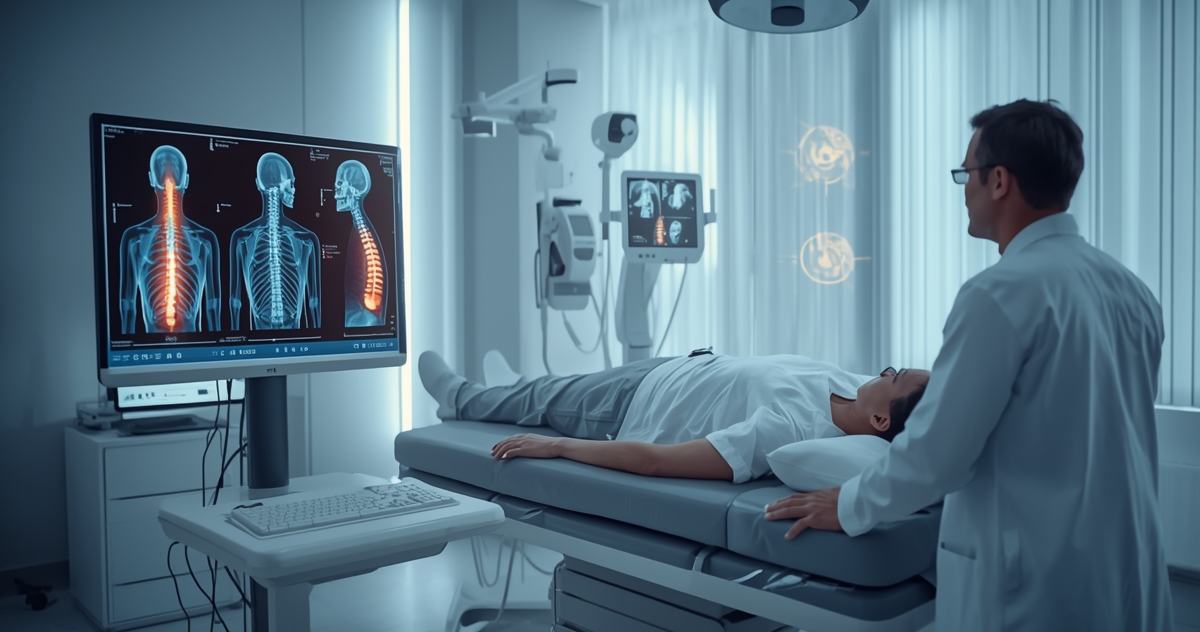Blog Post
Breaking the Cycle of Back Pain: How Interventional Radiology Helps with Spine Fractures

Back pain is one of the most common reasons people visit a doctor. For many, it’s a temporary discomfort, but for others, persistent or severe back pain may signal a more serious issue, such as a spinal fracture. These fractures can happen from trauma, osteoporosis, or even minor stress on weakened bones. They often lead to chronic pain, reduced mobility, and a lower quality of life. Fortunately, advances in interventional radiology have introduced minimally invasive solutions that help patients recover faster and more effectively.
Understanding Spine Fractures
A spinal fracture occurs when one or more vertebrae in the spine crack or collapse. Common causes include:
- Osteoporosis, which weakens bones and makes them more prone to fractures
- Trauma, such as falls, car accidents, or sports injuries
- Metastatic cancer affecting the spine, which can compromise bone strength
- Stress fractures from repetitive motion or heavy lifting
Symptoms of spinal fractures vary depending on the location and severity but often include:
- Severe back pain that worsens with movement
- Limited mobility and stiffness
- Numbness, tingling, or weakness in the limbs if nerves are affected
- Height loss or a noticeable spinal deformity in severe cases
If left untreated, spinal fractures can lead to chronic back pain, spinal compression, and long-term disability.
Traditional vs. Modern Treatment Options
Traditional treatment for spinal fractures often involves extended bed rest, bracing, or open surgery. While these approaches can be effective, they may come with prolonged recovery times, higher risks of complications, and significant disruption to daily life.
Minimally invasive procedures through interventional radiology provide a safer, faster alternative. Techniques such as vertebroplasty or kyphoplasty involve stabilizing the fractured vertebra using image-guided injections of bone cement. These procedures can:
- Reduce or eliminate pain almost immediately
- Restore spinal stability
- Prevent further vertebral collapse
- Shorten recovery time, allowing patients to return to normal activities more quickly
Patients searching for treatment for spinal compression fracture or fractured spine recovery in Daytona Beach, FL often find that these minimally invasive solutions provide relief without the need for major surgery.
The Role of Interventional Radiology
Interventional radiology (IR) uses advanced imaging techniques like fluoroscopy, CT, or ultrasound to guide treatments with precision. For spine fractures, IR specialists can perform procedures that are highly targeted, reducing risks to surrounding tissues and minimizing scarring.
Benefits of IR for spinal fractures include:
- Precision: Image-guided procedures ensure accurate placement of cement or other therapeutic agents
- Safety: Minimally invasive approaches reduce the risk of infection and complications associated with open surgery
- Speed: Many procedures are outpatient, meaning shorter hospital stays and faster recovery
- Pain relief: Patients often experience immediate reduction in pain, improving mobility and quality of life
Additional Conditions Addressed by Interventional Radiology
Many clinics that offer spinal fracture treatments also provide care for related conditions, such as:
- Chronic back pain from degenerative discs
- Facet joint pain, with options like chronic facet joint pain treatment
- Pelvic congestion syndrome or vascular issues requiring minimally invasive treatment
- Vein-related concerns, including varicose veins laser therapy
By offering a wide range of interventional treatments, specialists can address both the root cause of pain and associated health issues, improving overall outcomes.
Lifestyle and Recovery Tips
Even with advanced interventional treatments, supporting spinal health at home is important. Patients are encouraged to:
- Engage in gentle exercise as recommended by a specialist, such as walking or swimming
- Maintain proper posture while sitting and standing
- Follow a bone-healthy diet rich in calcium and vitamin D
- Avoid heavy lifting or sudden twisting movements during recovery
- Use prescribed back braces or support devices as directed
These strategies complement medical treatments, helping prevent future fractures and promoting long-term spinal health.
Choosing the Right Specialist
If you are dealing with persistent back pain, limited mobility, or a spinal fracture, consulting a qualified pain clinic in Daytona Beach, Florida, or an experienced interventional specialist is crucial. Look for providers who offer:
- Minimally invasive procedures for spinal fractures
- Expertise in vertebroplasty, kyphoplasty, and related techniques
- Comprehensive evaluation and personalized treatment plans
- Post-procedure support and guidance for recovery
Working with a trusted interventional radiology team ensures safe, effective care that targets both symptoms and underlying causes.
Spinal fractures can trap patients in a cycle of chronic back pain and limited mobility. Thanks to interventional radiology, there are now minimally invasive options that provide quick pain relief, restore stability, and help patients regain independence. Combining medical treatment with lifestyle adjustments and ongoing care offers the best results for long-term spinal health.
If you are experiencing back pain or need guidance on fractured spine recovery, connect with the specialists at Interventional Specialists of Florida to explore safe, effective solutions tailored to your needs. Don’t let back pain hold you back—take the first step toward recovery today.